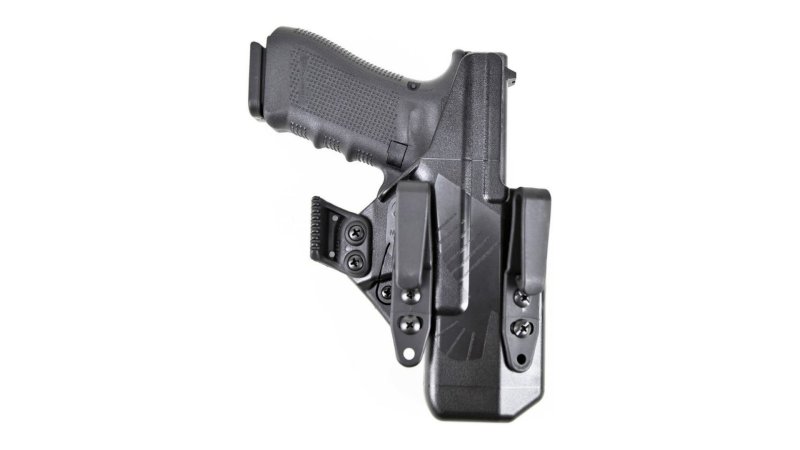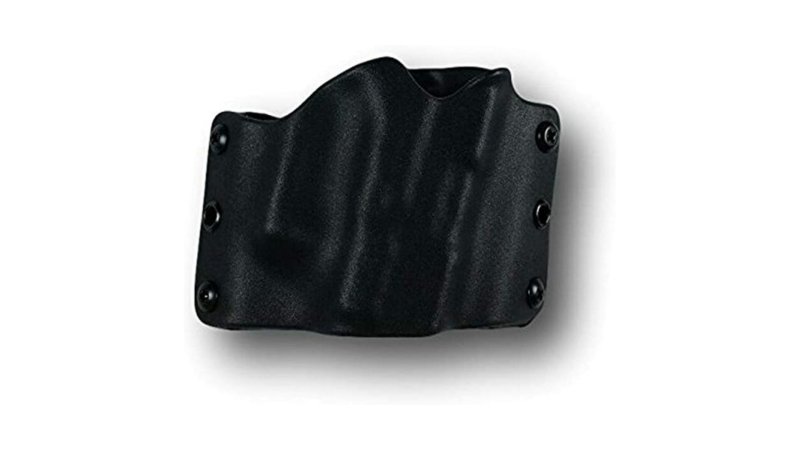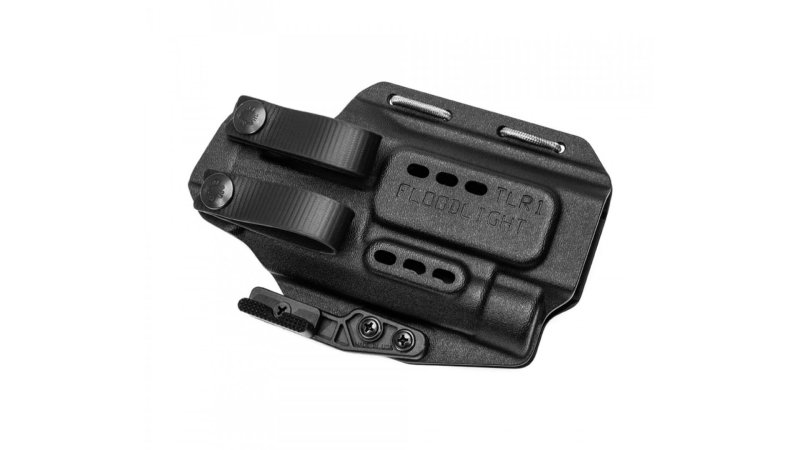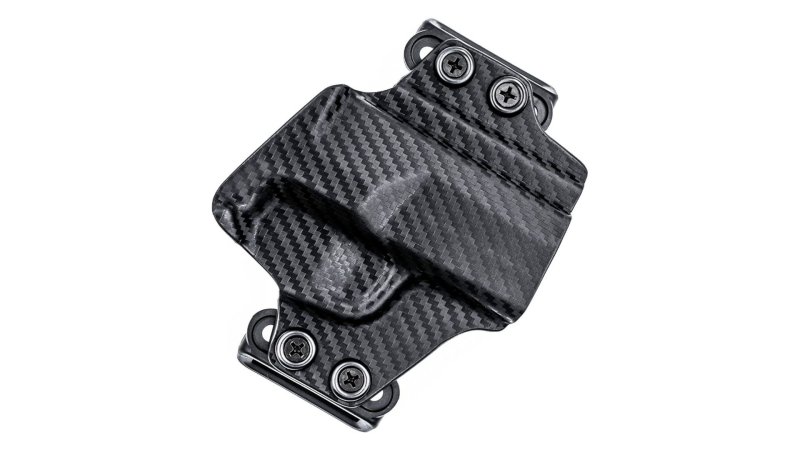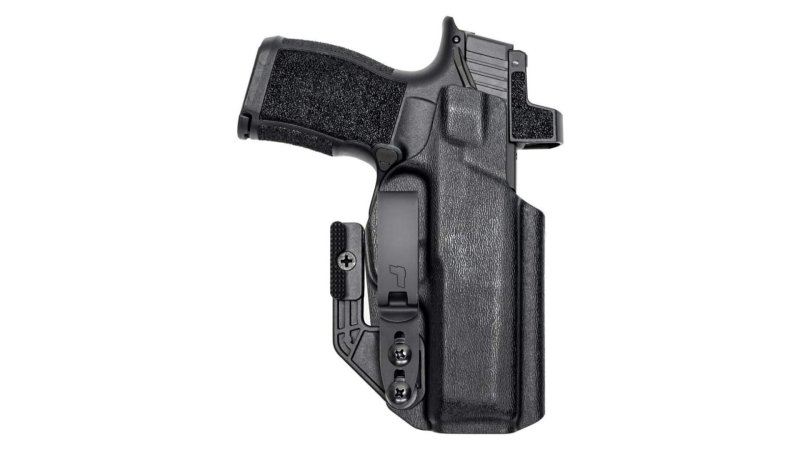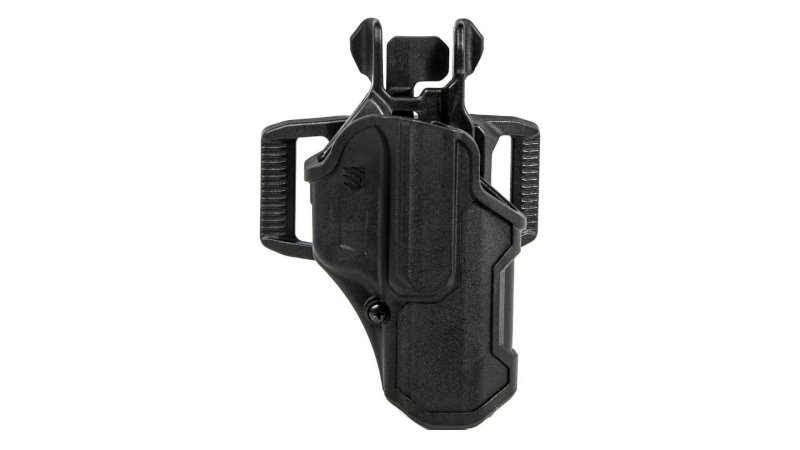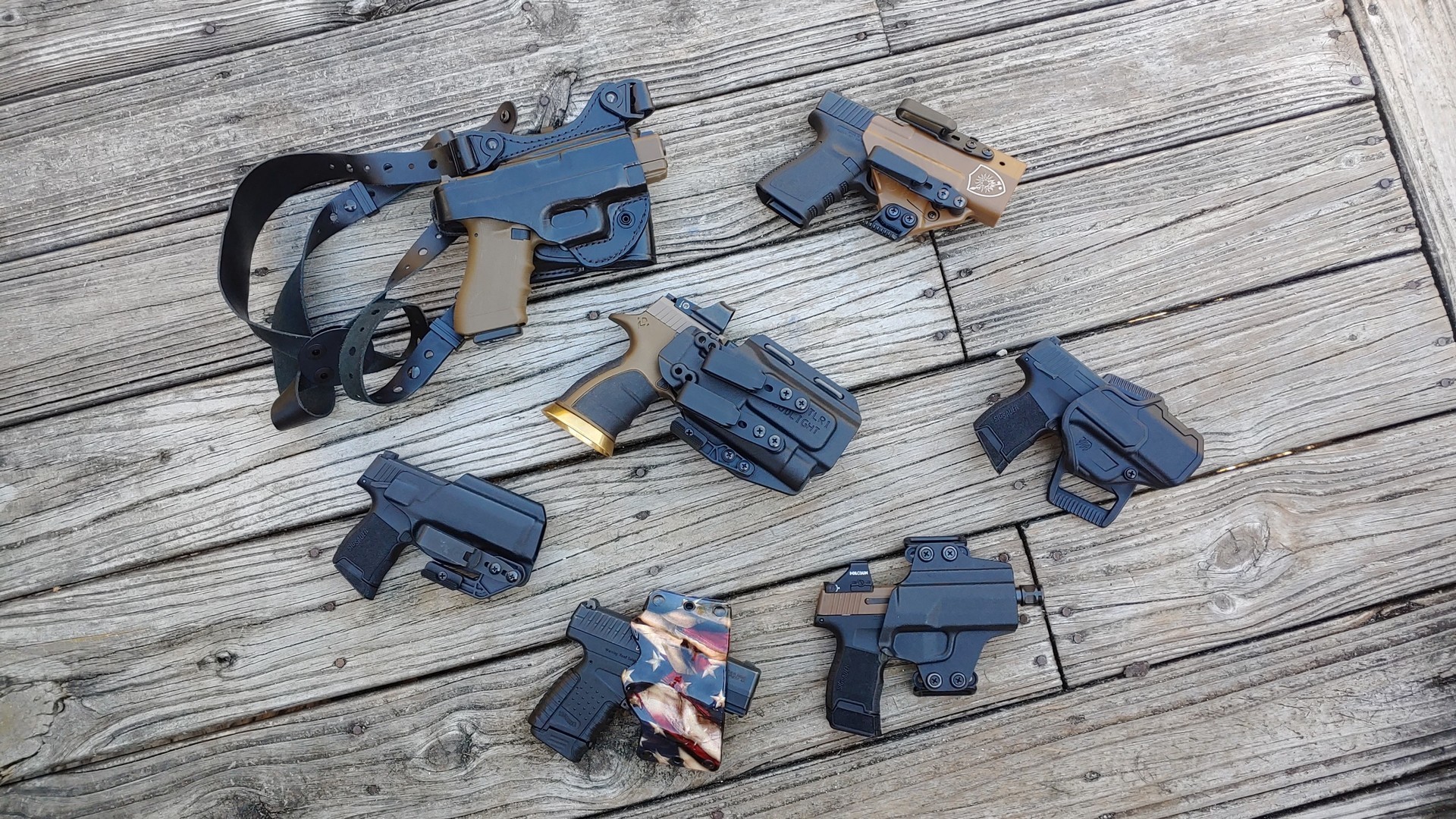

We may earn revenue from the products available on this page and participate in affiliate programs.
With more than 21 million people concealed carrying in the U.S. (and more if you include those who live in states that don’t require permits), you have a lot of people asking about the best concealed carry holster. But finding the right concealed carry holster is a matter of knowing your preferences. And chances are if you’re reading this article, you might not know that yet.
The best concealed carry holster should not only safely store your firearm, but also fit the design and retain it during activity. While you should also be able to wear it comfortably, you need to above all else be able to conceal it! While you could certainly find a concealed carry holster like that on your own, read on to find the best around and available this year.
Best Overall
Raven Concealment Systems Eidolon
Pros
- Makes a Glock disappear
- Safe and secure
- Slim and lightweight
- Customizable
Cons
- Glocks only
- Expensive
Product Specs
- Carry position: IWB
- Holster material: Kydex
- Retention: Passive Adjustable
Best Value
Phalanx Defense Stealth Operator
Pros
- Affordable
- Quasi universal
- Easy to conceal
Cons
- No adjustments
- Does not accommodate most firearm upgrades
Specs:
- Carry position: OWB and IWB
- Holster material: Kydex
- Retention: Passive
Editor’s Choice
Phlster Floodlight
Pros
- Customizable
- Accommodates all modern accessories
- Conceals with ease
- Fits multiple firearms
Cons
- Somewhat bulky
Specs:
- Carry position: AIWB or IWB
- Holster material: Kydex
- Retention: Passive adjustable
Best Belt Holster
Concealment Express OWB Belt Loop
Pros
- Comfortable
- Conceals easily
- Safe and secure
- Works with optics, compensators, and suppressor height sights
Cons
- Easy to nick your finger when drawing
Specs:
- Carry position: OWB
- Holster material: Kydex
- Retention: Passive
Best Shoulder Holster
Gould and Goodrich Gold Line
Pros
- Conceals full sized firearm with ease
- Allows you to carry two spare mags
- Adjustable
- Secure
Cons
- Easy to flag yourself or another on the draw
Specs:
- Carry position: Shoulder
- Holster material: Leather
- Retention: Active
Best Appendix Carry Holster
Tulster OATH
Pros
- Accommodates modern accessories
- Tuckable
- Super slim and comfy
- Comes with the modwing
Cons
- Very little ride height adjustment
Specs:
- Carry position: AIWB
- Holster material: Kydex
- Retention: Passive
Best OWB Holster
Blackhawk T-Series L2C
Pros
- Active retention for physical activities
- Super Comfy
- Adjustable cant and ride height
- Secure, but easy to defeat retention device
Cons
- Doesn’t offer the best concealment
- Makes offhand draws difficult
Specs L
- Carry position: OWB
- Holster material: Kydex
- Retention: Active
Why you should trust us
Picking a concealed carry holster is a big freaking deal. Why trust us to advise you? Well, a good portion of the Task & Purpose gear review team consists of total gun nerds. We carry daily, we instruct others how to carry, and we’ve also spent an embarrassing amount of money on holsters. I started from the bottom with crappy holsters, and through time, training, and carrying daily, I figured out what’s junk and what’s not. I can’t promise you much, but if you follow my advice and spend a little extra on a good holster, you’ll save a lot of money in the long run. Buy once, cry once.
Types of concealed carry holsters
There are four main categories of concealed carry holsters and they’re named after the way in which you wear them. These include Outside the Waistband (OWB), Inside the Waistband (IWB), Appendix Inside the Waistband (AIWB), and shoulder.
Outside the waistband (OWB)
Outside the Waistband (OWB) is the most traditional way to carry a firearm. You wear an OWB holster on your belt much like a police officer. Since OWB is the standard for open carry, it may sound counterintuitive to use it for concealed carry. Yet, that problem is easily remedied with a jacket or big shirt. Otherwise, OWB is comfortable and gives you quick access to your firearm. It’s ideal if you want to be active or carry a full-size handgun.
Inside the waistband (IWB)
Inside the waistband (IWB) sinks a holster below your belt line and inside your pants. IWB carry makes it insanely easy to conceal a firearm. In fact, the only portion of the gun that sits above the beltline is the pistol grip. Not all IWB holster have drawback. Some are built very well. Still, common issues people raise include discomfort as it might wedge between your belt and body; you might have difficulty accessing your firearm (especially if you don’t train); and you might not always be able to reholster. Still, it’s the most popular holster for concealed carry.
Appendix (AIWB)
Appendix carry (AIWB) is another form of inside the waistband carry, but it’s so popular that it deserves its own category. It’s when the rig sits at the front of your body, often on the left or right of your belt buckle, depending on which is your dominant side. Many prefer appendix carry because it provides more space for a full-size firearm or firearm with accessories. On top of that, it allows you to draw from a very natural position. The drawback, for many, is discomfort, especially if you have a belly. Still, many like it, including your humble author.
Shoulder holsters
Shoulder holsters sure seem cool and will certainly give you that Miami Vice vibe. They mostly come in handy when you’re packing a large handgun. However, they do have several drawbacks. First, it places your firearm just below your armpit, so it’s more susceptible to sweat and stink. Second, if you’re unaccustomed to wearing a shoulder rig, it can be uncomfortable. And perhaps most importantly, there’s a safety concern if you don’t train, which is flagging your non-dominant arm when you draw. Still, this niche works well in situations where you’re driving for long periods of time or up to your waist in, well, anything.
Key features of concealed carry holsters
When you’re shopping for a concealed carry holster, you should look for these seven qualities in particular: safety, fit, concealment, retention, ease of reholster, stability, and comfort.
Safety
When it comes to a safe holster, the main concern is unintentional trigger manipulation. Therefore, the design should completely cover the trigger when your gun is holstered, and it should also protect the trigger from accidental exposure.
Fit
A holster should be purpose-built to fit your firearm. Many designs are molded after a specific model while others use a universal mold generic enough to fit multiple firearm models. Either way, the gun should fit firmly inside the holster. In other words, the gun should not move excessively when holstered.
Concealment
Concealed carry holsters are their own separate thing for a reason. These designs use minimal materials to cut out any bulk and reduce printing. A concealed carry holster should fit gracefully with your everyday clothes.
Retention
Retention is a term to describe how well your holster grips your firearm. Proper retention ensures the weapon will not leave the holster during normal, everyday activities. A good holster will hold the weapon in place and prevent it from leaving until the user intends it to.
Ease of reholster
Reholstering your weapon shouldn’t be difficult or take both hands. You should be able to safely slide the weapon back into your holster with absolute ease.
Stability
Stability mostly ties to how the holster connects to your pants or body. The holster should attach and hold in a single position through daily activities as well as drawing. No matter what you do, the holster should stay in one spot.
Comfort
A good holster should be decently comfortable. A comfortable holster has rounded edges and plenty of adjustable features that allow you to customize it to your liking. Although comfort is an important factor in selecting a concealed carry holster, it’s also a question of what do you gain and what do you lose? Oftentimes, more comfort is at the expense of another key feature. So, it’s best to find a holster that’s the right balance of comfort and the qualities mentioned above.
Pricing considerations for concealed carry holsters
Budget
When I say budget, I don’t mean cheap. It will be totally functional, but a no-frills design. A budget holster usually won’t be molded for firearm accessories and probably won’t offer adjustable features.
Mid-Tier
Mid-Tier holsters are where we start getting into holsters that accommodate most modern accessories, albeit light-bearing holsters are rare at this price point. We start to see more customization and adjustments made for users, as well as greater compatibility with aftermarket holster accessories.
Premium
Premium rigs give you everything! Mostly light-bearing options, all the accessories you could ever want. Lights, lasers, optics, different height sights, heck, maybe cup holders if you look hard enough. You’ll often see holsters in the premium level include various attachments, including different clips, loops, and wedges with the holster. Expect maximum customization with premium tier holsters.
How we chose our top picks
First and foremost, we allowed our experience to inform what holsters we listed in this article. We allowed that experience to guide our research and hands-on testing. We also solicited advice from holster designers, professional firearm handlers and instructors, and seasoned users. We took careful consideration of the construction of the holster by looking at everything from the safety mechanisms to the materials used to the design as a whole.
FAQs on concealed carry holsters
You’ve got questions, Task & Purpose has answers.
Q; What is the most comfortable holster for concealed carry?
A: It’s a matter of preference, but most people agree OWB rigs are the most comfortable option.
Q; What should I look for in a holster?
A: In order of most important to least: safety, fit, concealment, access, easy reholstering, and then comfort.
Q: What is the most comfortable concealed carry position?
A: Strongside OWB or IWB is often considered the most comfortable position.
Q: What makes a great concealed carry holster?
A: A form-fitting and thoughtful design makes a great holster. Without one, you have a pocket, not a holster.
Our gear section
Travis Pike is a former Marine machine gunner who served with 2nd Battalion, 2nd Marines for five years. He deployed in 2009 to Afghanistan and again in 2011 with the 22nd MEU(SOC) during a record-setting 11 months at sea. He’s trained with the Romanian Army, the Spanish Marines, the Emirate Marines, and the Afghan National Army. He plays in the great outdoors of Northwest Florida and enjoys good beer, sharp knives, and long walks in the woods.
